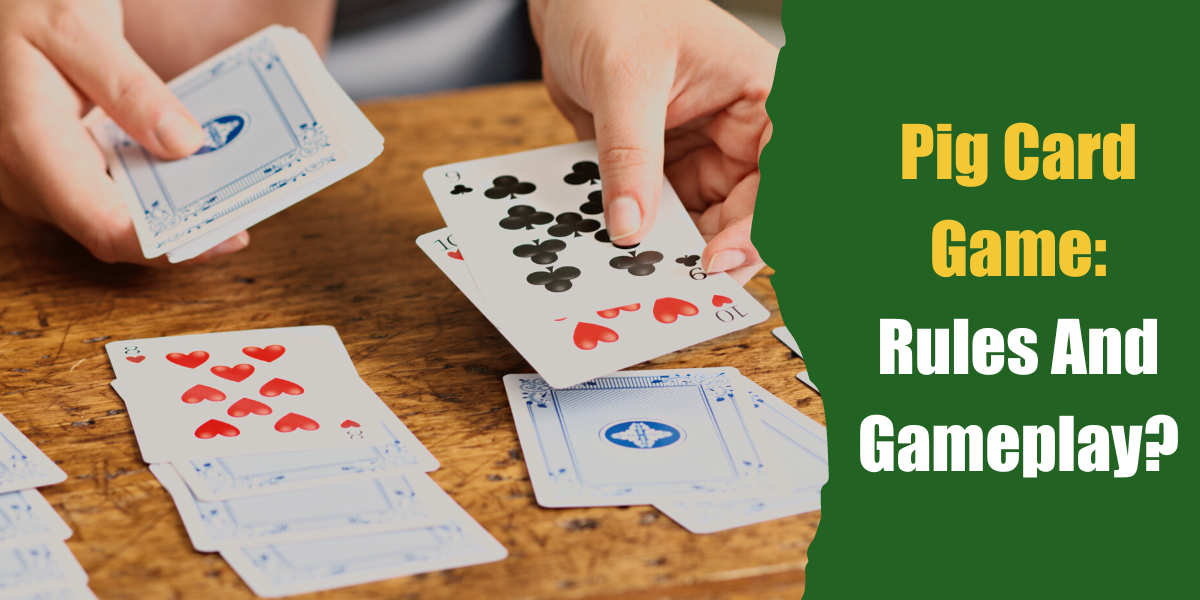If you’re after a simplistic, fun, and energetic game to play with the family, you’ve found it here, with Pig.
Pig is a classic game that is educational, enjoyable, and entertaining.
The idea of the game is to beat your opponents by reaching a specific number of points. However, to do this, there is a catch. If you roll a Pig, all your points are deducted.
Overall, Pig is a great game for people of all ages. Throughout this guide, I will take you step-by-step through the rules, instructions, and what you’ll need to get started.
So, let’s take a closer look and teach you everything there is to know about Pig Card Game and liven up your next family games night.
What You’ll Need to Play Pig Card Game?
So, if you’re here, you’ve already got a deck of playing cards you can play with. If you haven’t, or you want to update to something more contemporary, check out these embossed smokey grey cards. They’ll make an excellent talking point at your next party and are incredibly durable.
So, now you’ve got your deck of cards, old or new, you’ll be glad to know, you’re fully equipped and ready to go.
How to Play Pig Card Game?

To prepare for gameplay, grab your deck of cards and gather all participants around the table or playing area.
You’ll need to start by selecting a dealer. It’s really up to you how you pick. When I’m playing with my friends and family, we like to choose the person who has a birthday coming up next.
Another way of choosing is by each drawing a card; whoever has the highest goes first.
Once the dealer has been determined, you must shuffle the deck.
You can shuffle by hand if you’re a pro, or you can purchase an automatic card shuffler. These also come in handy for kids, as they can have their turn shuffling the cards.
The dealer now dishes out four cards to each player, face down, one at a time. The rest of the cards are placed in the center as the stockpile.
The player sitting to the dealer’s left takes their turn first. To do this, draw a single card from the stockpile before deciding whether or not to keep drawing more or “stick.” If you stick, your turn is over, and the total value of your cards is your score, but if you choose to keep picking more cards, you should be warned if your cards add up to more than 21, you’ll be out of the game or “go bust.”
Now, the aim of the game is, of course, to get the highest score. So, if you realize you have the lowest score in the group, quietly place your finger on your nose.
If you see someone else with their finger on their nose, do the same as quickly as possible because the last person to perform the action loses all their points.
Scoring in Pig Card Game
So, we already know what you need to do to win, but how do you calculate the score?
In the Pig card game, points are earned based on your cards at the end of each round.
- Face cards, such as Kings, Queens, and Jacks = 10 Points
- Aces = 1 Point
- Numbered Cards = Face Value
The person with the lowest score at the end of the round earns points equal to the difference between theirs and the winners.
For example, if you’re the loser and you have 10 points, and the winner has 25 points, you earn 15.
Other Variations of The Pig Card Game
There are quite a few other variations of the game which you can experiment with once you’ve outplayed the classic version.
Let’s take a look.
1. Pig in The Pen
In this version of the game, players take turns drawing cards and adding them to their hands, similar to the original game.
Once you total 21 points worth of cards, you should “go to the pen” and place your cards in a pile. The remaining players have one final chance to get their cards to 21.
Anyone who manages it can break the pen and draw another card. Once all players have been to the pen, the person with the lowest overall score loses.
2. Pass The Pig
In Pass The Pig, the dealer draws the first card from the stockpile and places it in the center of the playing area. The player to their left draws another and decides whether to pass or “roll the pig.”
If you opt to pass, you’ll earn points equal to the value of the center-placed card.
If you decide to “roll the pig,” then the value of the card you drew is added to the value of the center-placed card.
Should the total exceed 7, you don’t earn any points in that round. If less than 7, you will earn the total value of points.
3. Skunk
Everyone draws cards from the stockpile to play Skunk, adding them to their hand. However, whereas the aim is to get 21 points in your hand, in Pig, the aim of Skunk is 31.
And, instead of putting your finger on your nose when you hit the required point score, you knock on the table.
Once you’ve knocked on the table, everyone else can up their points by drawing another card.
Whoever has the lowest score is the loser and is given the letter “S.” The first person to spell out the word S-K-U-N-K with their losing letters is the overall losing player.
Conclusion
The pig card game is a simplistic game that the entire family, including younger kids, can enjoy due to its easy-to-learn rules and lack of strategy.
It can also encourage younger players to brush up on their numeracy skills.
I love everything about this game, and the fact that there are so many variations of it makes it even more exciting.


